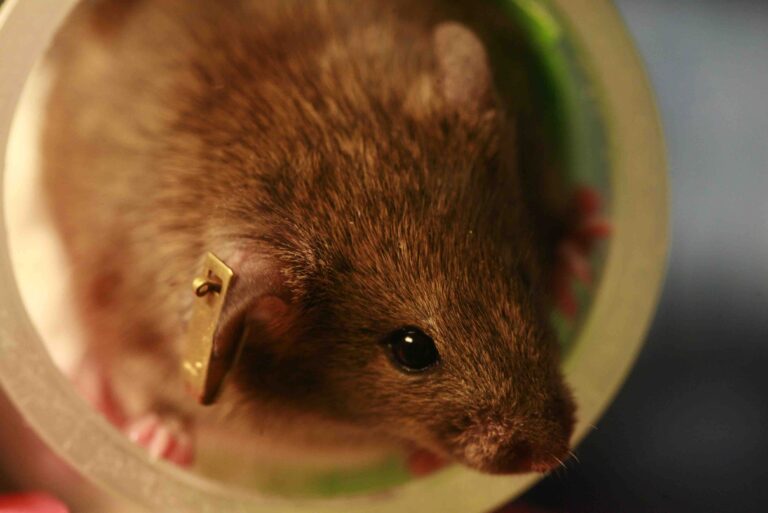This article was first published in german Translated and published with permission.
As reported by a prestigious magazine scienceCongress has exempted the U.S. Food and Drug Administration (FDA), the world's trendsetter in this field, from the requirement to conduct animal testing before testing drugs on humans.
Animal rights groups are delighted. But what's behind that decision? And does this mean humans can now legally be used as proverbial “guinea pigs”? Unfortunately, that's the case. . But let's take a closer look at the problem.
Clinical trials are human trials necessary to test the effectiveness and safety of medicines before they are approved and administered to humans en masse. Pharmacon In ancient Greek, it means both “poison” and “cure.” Paracelsus gave us a proverbial insight. dosis sola facit venenum: The dose alone causes toxicity.
Therefore, human trials are required to determine the correct dose of a drug and to study how it is distributed, metabolized, excreted or deposited in the body. How long does it take to take effect (pharmacokinetics)? how they work. and what undesirable effects they have (pharmacodynamics).
The human drug research process is divided into three main stages. Phase I helps establish basic safety, dose-response relationships, and pharmacokinetics. Phase II is aimed at initial demonstration of efficacy and further investigation of safety and pharmacokinetic aspects of the drug. It is at this stage that most drugs fail due to insufficient efficacy or toxicity.
Phase III helps demonstrate efficacy and safety in larger samples and generate empirical evidence to support indications for the drug's use. Animal testing helps reduce the burden of human testing. The burden always consists of toxicity that leads to death or chronic damage in the subject, causing all forms of internal dysfunction, such as kidney destruction, chronic liver damage, myocardial damage, nervous system damage, and autoimmune diseases. Masu. .
Purpose of animal experiments
In this context, animal studies have the task of modeling to predict pharmacokinetics and dynamics in humans. Of course, the model is not perfect, as the experiments mainly involve mice, rats, fish, and birds, and only large mammals. explain Just over 3 percent of all experiments and 1.6 percent of all fatal outcomes. From a pharmacological point of view, not using large mammals, especially prosimians and monkeys, is problematic. This is because the data developed with these models best correspond to the human condition. I return to this issue below.
According to the Federal Institute for Risk Assessment, a total of 1.8 million animals were used for experimental purposes in Germany in 2021, and 644,000 were killed. This includes basic and pharmaceutical research, but the majority of rodent use is undoubtedly in pharmaceutical trials, which together account for 80 percent of experiments and more than 90 percent of fatal outcomes. .
So, can abandoning animal testing be called progress??
Animal studies are used to determine drug doses, dose-effect relationships, and therapeutic ranges, as well as to determine pharmacokinetics and toxicity. If animal testing were abolished, the toxicity would only be revealed in humans, and as a result, more people would suffer death or disability from human testing.
still science The aforementioned paper shows that it is possible to avoid animal testing by using computer models and what are known as organ simulation chips, in which cell cultures or clusters of cells (so-called microorgans) are embedded in silicone devices. I claim that there is. It is considered even better in determining pharmacological parameters because nutrients and oxygen are supplied through artificial capillaries.
This is completely wrong. Currently existing methods cannot adequately and comprehensively reproduce the complex systems of mammalian organisms. Here, “adequate” means being able to meet the requirements of emulation, that is, in this case, being able to transfer the pharmacological results to the animal situation, and “synoptic” (literally, “the big picture”). ) refers to its comprehensiveness. model.
In other words, neither computer simulation nor emulation in organ models can tell us what the pharmacokinetics and dynamics will be in vivo. How could they?
Abandoning pseudo-innovations
Too little is known about the complex pharmacology of living organisms to be expressed mathematically in computer models. The available models cover a very narrow area of pharmacology and only provide rough approximations. And how does a silicon device with pseudocapillaries and cells grow? in vitro Do you need to know how drugs are distributed and how they affect the thousands of different cell types and hundreds of organs and organ function areas in your body? That's not possible.
Indeed, animal studies, especially mouse models, have limited applicability to human predictions. (experimental mouse) The mice we use are highly overbred and genetically homogenized, so their distance from wild-type human populations is much greater than that of actual mice living in the wild. . This is why toxic effects not observed in animals regularly appear in human experiments.
The problem isn't animal testing. itselfBut the biopharmaceutical industry is dominated by the testing and approval of drugs that have shown little or no clinical benefit or are used in populations that can do without them. Terminal cancer patients). Most of the drugs currently approved as new drugs belonged to one of these groups.
If we dispense with such pseudo-innovations and only seek to bring compounds into clinical practice that actually have significant clinical effects, we can afford to test these drugs in monkeys, and we can afford to test them in mice and rats. The results will be much more predictive in humans than the trials. .
On the other hand, if we omit animal testing, we will only do more harm than good by killing or seriously injuring more people in human experiments called clinical trials.
big picture
But we now know something else. It means that regulators are not only refraining from animal testing, but are also willing to ignore deaths and injuries that occur in poorly prepared clinical trials. Regulatory filings regarding SARS-CoV-2 “vaccination” by Pfizer/BioNTech, AstraZeneca and Moderna indicate that the nucleic acid injection used for vaccination harmful and clinically ineffectiveNevertheless, they were approved in defiance of the warning signals raised by studies and the critical drug safety systems of the CDC, MHRA, and Germany's BfARM/Paul Ehrlich Institute.
This practice continues to this day. For example, the Chairman of the Swiss Federal Committee on Vaccination Issues deliberately lied on January 22, 2023, stating that “vaccines” safe and effective Overall, despite severe side effects.
In other words, if the precedent set by SARS-CoV-2 nucleic acid injections continues, our government is prepared to abandon animal testing in drug research and ignore the resulting deaths and disabilities. It will show something. Facilitate, pay for, and promote mass administration of toxins.
How can you explain this?A new article in of lancet It gives us important hints. By placing human medical needs on the same level as those of animals, the distinguished team of authors discounts the special legal and moral status of humans, which is ingrained in our culture and is also the basis of human rights. It seems so.
For the authors, animal and human welfare are equally important. They are calling for the end of national regulations, an end to the separation of human and veterinary medicine, and the WHO's One Health program to prepare for further pandemics. This will primarily be done through a massive expansion of vaccination programs for animals and humans. This is to serve the interests of the pharmaceutical industry at the expense of human and animal health, which are exclusively harmed by nucleic acid therapies (see) My responses to reader questionspoint 4).
In doing so, they argue in the tradition of Peter Singer. animal liberation He was the first to demand that the treatment of animals be consistent with that of humans, and the first to popularize veganism. New legislation by Congress and the idea of One Health appear to have taken this view and radicalized it. But are they really contributing to animal welfare by doing so? I'm sorry but I disagree; they are serving the interests of the pharmaceutical industry no matter how many lives it costs. We are witnessing a total destruction of human rights.


